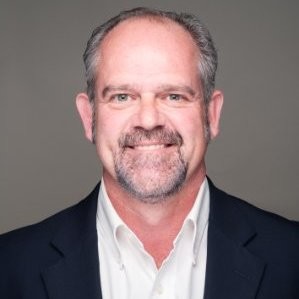White Paper
“This cartoner is always jamming! I have to constantly call Maintenance!”
“Every day I come in I have to set the machine up to the way I like it.”
“Changeovers are taking too long, and everyone does it differently.”
“All of these machine stops give me a headache! It’s a constant battle.”
“We used to have a centerline process, but nobody paid attention to it.”
If you are constantly hearing these sound bites you probably need to look at your Centerline Process…
What is Centerlining?
Centerlining is a structured process used in manufacturing to establish and maintain optimal settings for equipment, ensuring that production processes remain stable and consistent. The primary goal of centerlining is to reduce variability, which is a common cause of inefficiencies, defects, and downtime in production lines.
The concept is rooted in the principles of Lean Manufacturing and Total Productive Maintenance (TPM). It involves identifying key parameters (such as machine settings, environmental conditions, and input materials) and ensuring these parameters are consistently maintained within a specific range or “centerline.” By doing so, manufacturers can achieve more predictable outputs, reduce waste, and improve overall equipment effectiveness (OEE).
Centerlining is particularly effective in high-speed manufacturing environments where even minor deviations from optimal settings can lead to significant performance issues. It’s an essential tool for continuous improvement, as it provides a clear framework for identifying and addressing process variations.
The most common misconception is that centerlining is solely a maintenance activity or solely a production activity. When properly executed, a centerline program is a highly integrated process that involves leadership, supervision, operators and mechanics. It encompasses leader standard work to monitor performance issues, drive problem solving and unlock performance improvements.
Implementation of Centerlining
Implementing Centerlining in a manufacturing environment involves a series of steps that are designed to establish, document, and maintain optimal settings for equipment and processes. The implementation process can be broken down into several key phases:
a. Preparation
Before starting the Centerlining process, it is crucial to have a clear understanding of the production line’s current performance. This includes identifying critical equipment, understanding the key variables that impact performance, and gathering baseline data. A cross-functional team, including operators, maintenance staff, and engineers, should be assembled to ensure all aspects of the process are considered. One common strategy is to focus on the top source of loss. The biggest benefit will usually come from the asset that is driving the biggest pain point.
b. Deep Cleaning, Initial Assessment, and Baselines
A thorough cleaning of the equipment is often the first step in the implementation process. This not only helps to restore the equipment to its optimal condition but also allows for a detailed inspection to identify any existing issues, such as wear and tear or misalignments. Operators and maintenance staff should work together to conduct this assessment. The deep clean should generate a list (workorders) for all critical repairs. In most cases, if this step is not completed the process will be difficult to execute Attempting to Centerline an asset that is not in good working condition will make reducing variability very difficult. It is highly recommended that a series of CIL (Clean, Inspect, Lubrication) activities are developed and assigned. An organization will become very frustrated if a large investment is made (people, time, expense) and the asset’s cleanliness is not maintained
c. Identifying Adjustment Points
Using tools like the “Red Dot Exercise,” the team identifies all points on the equipment where adjustments can be made. These points are then classified as either “critical” or “non-critical.” Critical points are those that have a significant impact on performance and should be closely monitored and controlled. Non-critical points are less impactful and may not require as stringent control. Many of the non-critical points may actually be classified as “do no move” points as a way to eliminate unnecessary adjustments.
d. Determining Run Right Settings
Once the equipment is cleaned, repaired, and unnecessary adjustment points have been eliminated, the next step is to document the current settings for the critical adjustment points and performance at those settings. This activity includes recording machine settings, environmental conditions, and input material specifications. The goal is to establish a “centerline” or optimal range for each critical variable.
e. Documentation and Standardization
All identified adjustment points and their corresponding settings are documented in a standard operating procedure (SOP). This documentation should be clear and easily accessible to all operators. Visual controls, such as color-coded markings or diagrams, can be used to help operators quickly identify and verify correct settings.
f. Training and Engagement
Operator training is a critical component of successful centerlining implementation. Operators need to understand the importance of maintaining the centerline and how to adjust settings if necessary. Part of the training on adjustments needs to include steps to take before making any adjustments to the optimal settings. Regular training sessions and audits help to reinforce this knowledge and ensure ongoing adherence to the centerlining process.
g. Continuous Monitoring and Improvement
Once Centerlining is implemented, continuous monitoring is essential to ensure that settings remain within the established ranges. Audits of centerline settings should be done at regular intervals, as a part of either the operator’s, mechanic’s or supervisor’s Leader Standard Work. Data from production runs should be regularly reviewed to identify any deviations from the Centerline. When deviations occur, root cause analysis should be conducted to identify and correct the underlying issue.
Pitfalls & Challenges of Centerlining
Centerlining implementations fall short due to a lack of training and communication on the expectations. Successful implementations of Centerline require comprehensive training program with all individuals who will be involved. Insufficient training or poor communication can lead to misunderstandings, inconsistent application of standards, and ultimately, process inefficiencies. The first opportunity to develop training is around the CIL process. CILs get the operators interacting with the equipment on a frequent basis.
Another area where Centerline implementations have failed is a lack of focus on Change Management. Employees and management may resist change associated with implementing or adjusting centerlines due to comfort with existing processes or fear of increased workload. Centerline is a program that requires discipline and rigor. In most manufacturing environments, the resistance to change can hinder the successful adoption of the Centerline process and reduce its overall effectiveness.
A good Centerline program can deliver a step-change in performance! Improved Overall Equipment Effectiveness, Changeover Performance, Material Yield and Asset Care are only a few areas that organizations identify drastic improvement.
The key is to be diligent in the process, focused on the people and structured in the change control.
About the Author
Eric Parlin, Director of Operations at As One Consulting, leverages over 20 years in Operational Consulting to develop strategic roadmaps that drive impactful client results. Previously, he led roles as Principal at Lean Solutions, Head of Management Consulting at ICC, Inc., and Director at Aptimise Consulting, managing projects for Momentive Performance Materials and Georgia Pacific. His expertise includes Supply Chain Management, Lean Manufacturing, and Leadership Coaching. Eric holds an MBA from the University of Michigan, a B.A. in Economics from Western Michigan University, and is a certified Lean/Six Sigma Black Belt.









